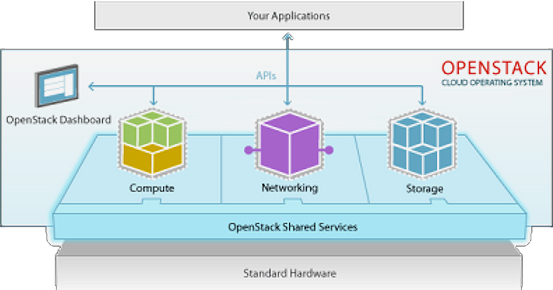by Nick DeRose
Attend any enterprise technology show or speak to any enterprise technology vendor and much of the conversation will be about OpenStack: open-source software for building private and public clouds. Having engaged in a number of these discussions, I wanted to see firsthand what all the hype was about, and whether the hype lives up to reality.
Think of OpenStack as a cloud operating system akin to Amazon Web Services. It is used by corporations, service providers, VARS, SMBs, global datacenters, and others looking to deploy large-scale cloud deployments leveraging technologies developed by an open source community.
At the OpenStack Summit in Atlanta, I spoke with a wide variety of companies, large and small. What I came away with is that OpenStack has momentum – large enterprises are deploying OpenStack in production (Comcast, Disney) and all the major technology vendors (Red Hat, IBM, HP, Cisco, Dell) are placing huge bets on its success. That being said, it’s still early in the ball game and contributors are addressing several of the barriers to widespread adoption.
OpenStack is a framework and not a product. Its loose framework is divided into multiple components (see picture below) where users choose their desired components. Each component is a project within the OpenStack governance structure. Each project has its own technical road map and leadership.

So is OpenStack becoming a reality? Many VARs and companies told me that their customers are kicking the tires and creating OpenStack proofs of concept (POCs). Now, getting those POCs into production is a different story and it may be 3-5 years before mass adoption takes place. While OpenStack has evolved over time, in my view, a few things need to be addressed before the framework will become mainstream:
Ease of use – While anyone can download OpenStack, most companies will need/want to select a commercial distribution (Red Hat, MetaCloud, etc.) to get it running. Distributions greatly simplify the deployment, but OpenStack still requires significant expertise and effort to install, maintain, and upgrade. Hence, most of today’s deployments are large enterprises who have these resources readily available.
Interoperability – I constantly hear pitches and presentations where the company’s grand vision is to provide a hybrid cloud in which moving data or applications between private and public clouds are relatively seamless. For that to happen, both sides have to be interoperable. Interoperability is a non-trivial challenge. It is widely believed that since OpenStack is an open source community project, then it is standards based, and will provide interoperability and portability (I’m guilty of this belief). However, that isn’t the case…yet. The problem with the current form of OpenStack is that there are no standards, so there are interoperability issues between different OpenStack versions, commercial distributions are replacing certain components with proprietary components, some distributions will only support a specific set of hardware vendors, etc. So to truly have a hybrid cloud, you will have to choose specific service providers, running the risk of vendor lock-in – exactly the problem you were trying to avoid by deploying OpenStack.
Compatibility – As with any open source project with thousands of contributors, and no central governance, compatibility is always an issue. One of my big concerns about OpenStack is what will break when you upgrade to the latest release. Even if you are using a prepackaged solution or going at it alone, there are so many different interdependencies it seems impossible to have a smooth migration between versions. Further, there isn’t a simple support matrix or a simple way to know if your underlying infrastructure can support the latest version. Mirantis is taking a step in the right direction by providing a set of tools that vendors can use to voluntarily self-certify compatibility of their solutions with the upstream OpenStack codebase, but there’s limited partners to date.
Expertise – OpenStack is nontrivial, it requires a significant amount of experience. Unfortunately, it isn’t a simple click on an executable file and you’re up and running – like VMware. Even if you have the most talented team, having a successful deployment of OpenStack will most likely require consultancy services (i.e. Mirantis) or an OpenStack distribution (i.e. Red Hat) that makes it easier to deploy within an organization.
But the fact is that with every new release of OpenStack the better it gets.
Like many new technologies, especially in enterprise IT, it takes time to materialize. I believe OpenStack is heading in the right direction but for it to become mainstream it needs to not be so complex and be adopted by companies both big and small. If it doesn’t solve these problems then it will be tough to compete as Amazon AWS is ramping up its enterprise efforts and VMware and Microsoft have both released their own enterprise-focused clouds.
Being a banker, I’m always keen to see what trends are disruptive and if there are companies that could be ripe for acquisition. With all the hype and momentum behind OpenStack, I believe there will be a lot of consolidation in the next few years. Red Hat’s acquisition of Inktank is just the beginning.Nick DeRose is Vice President at GrowthPoint Technology Partners. He can be found on Twitter @nickderose. GrowthPoint Technology Partners is not directly affiliated with OpenStack or any other companies mentioned in this piece. Further, this piece is not to be considered investment advice or research on the named companies.